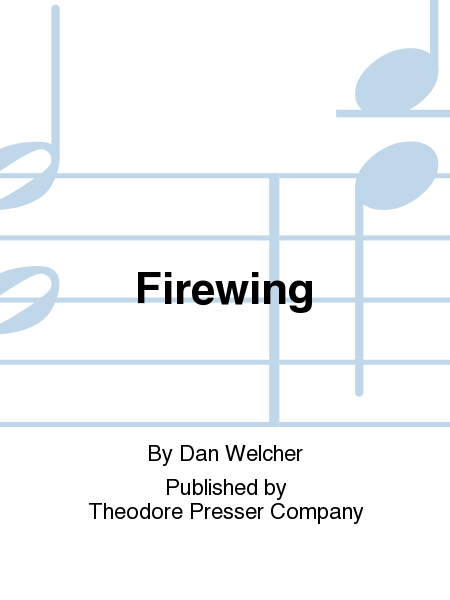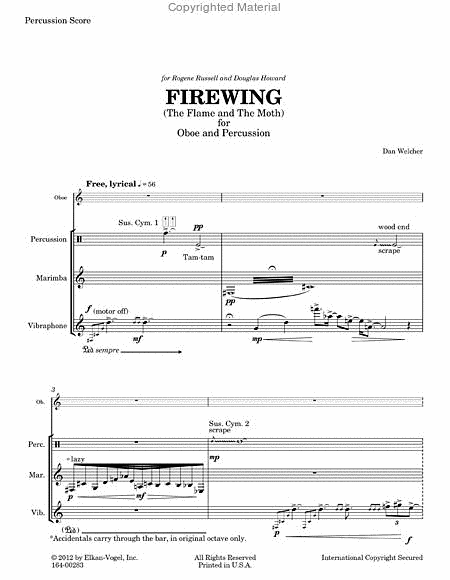Firewing
The Flame and The Moth
-
Ships in 2 to 3 weeks
Details
Description
SKU: PR.164002830
The Flame and The Moth. Composed by Dan Welcher. Contemporary. Set of Score and Parts. With Standard notation. Composed 1987. 24+8 pages. Duration 11 minutes, 30 seconds. Theodore Presser Company #164-00283. Published by Theodore Presser Company (PR.164002830).ISBN 9781491101537. UPC: 680160610624. 8.5 x 11 inches.
Like a moth to a flame only begins to set the scene in Welcher's challenging duo. In pairing the oboe to an array of percussive instruments, he carefully considered an approach which would allow the two to coexist as equals, eventually finding just the right inspiration in the description of a moth "seduced and repelled by the fire." For advanced performers.
Firewing was commissioned in 1988 by oboist Rogene Russell and percussionist Douglas Howard, longtime friendsof mine. In considering what kind of music would sound “right” for their instruments, I was faced with two questions: how could a straightforward melodic instrument like the oboe compete with the array of colorful sounds offered by percussion instruments? Conversely, how could the percussion do anything but support the oboe without overwhelming it altogether?I discovered the solution in literature, in a book by the Pulitzer Prize winner Annie Dillard, a favorite author of mine. Her volume of musings and verse called Holy the Firm contains a haunting vignette about a small moth that flits about a candle flame, both seduced and repelled by the fire. The moth eventually lights on the rim of the candle and instantly bursts in flame. Dillard’s description of this immolation is pure expressionist poetry: in terse prose, she reveals how the various body parts (head, legs, wings) spatter and crackle into nothingness almost instantaneously. Finally, the moth’s abdomen and thorax, hollowed by the fire, stand upright and whole on the rim of the candle, acting as a second wick. In Dillard’s words: “The moth’s head was fire. She burned for two hours, until I blew her out…without changing, without bending or leaning—only glowing from within, like a flame-faced virgin gone to God, while I read by her light, kindled…while night pooled wetly at my feet.”Besides telling this story in sound, the music of Firewing allows the sound sources of oboe and percussion to exist separately in the first two-thirds of the piece, then merge for the final third as Moth and Flame become one. The oboe, skittering and fluttering, is the hapless insect, playing tonal music of a very decorative sort. The percussionist, playing a score of instruments, is given serialized, more formal music in his role as Flame. The percussion music is at once evocative, colorful, and seductive—becoming, in fact, a kind of sensual dancer who attracts the moth to her final Liebestod. By the end, the moth’s meolody has become that of the flame, but illuminated in the holy fire of her decorative flutterings.


 Share
Share